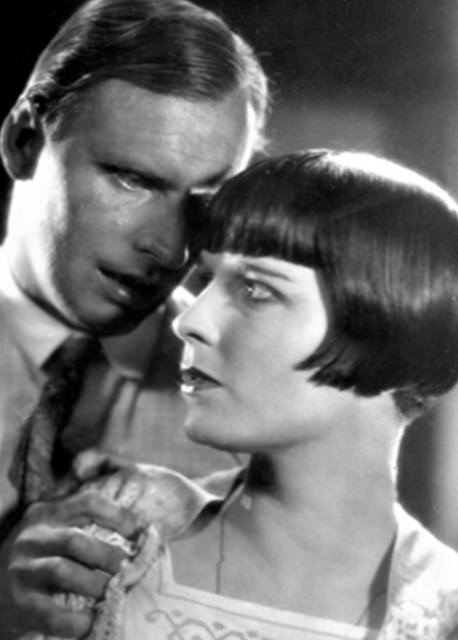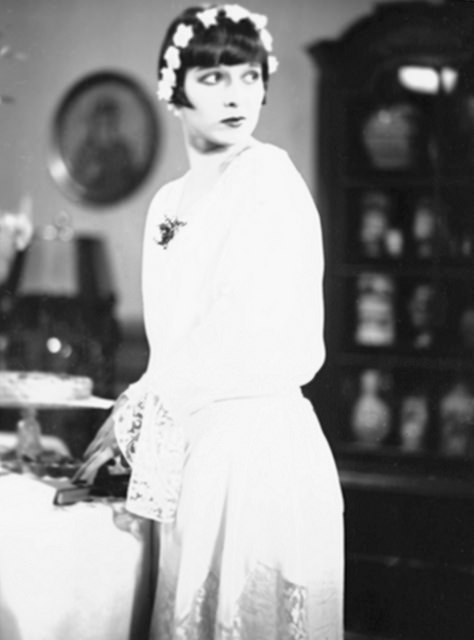
This is a guest post for Silent London by Peter Baran. You can follow Peter on Twitter at @pb14.
Louise Brooks and GW Pabst, an irresistible combination? Certainly Pandora’s Box (1929) caught lightning in a bottle, creating one of the most iconic female roles in all of silent cinema. In Pandora’s Box, Pabst and Brooks tease eroticism out of a certain ingenue naivety, whereas in her previous US films (A Girl In Every Port and Beggars of Life in particular) Brooks had offerede a slightly more world-weary sensuality. So it is no surprise that Pabst saw Brooks as the perfect person to play Thymian, the sheltered girl who will drop through the cracks of life via a workhouse for fallen women and prostitution.
This new Blu-Ray transfer of Diary of a Lost Girl (Tagebuch einer verlorenen, 1929) by Eureka’s Masters of Cinema label is a crisp and beautiful version of what is clearly an exploitation movie. As in Pandora’s Box, Pabst’s walks the tightrope of commenting on eroticism and sensuality; too often he falls off the tightrope into titillation. The film is set up for us to rue the difficult circumstances that lead to Thymian’s journey from a fine middle-class household down into poverty and eventually to selling her body. Except everything is still a bit clean. The reformatory is horrid, but only in comparison to her comfortable home – and its horridness is more due to a Miss Hanniganesque management rather than something inherent in the system. And there isn’t really too much criticism of Thymian’s shaming (AKA rape), and pregnancy. You get the sense that the original author (the film is based on a popular Margarete Böhme novel) and the film-makers are just following through the logical conclusion of these incidents. Instead, we end up with a somewhat warped fairytale, a slow-burn Snow White where the dwarves run a brothel full of happy hookers, or Cinderella with calisthenics.

There is a sensuality and rawness in Pandora’s Box, coming from Lulu’s naivity, which Thymian doesn’t share at all. At least by the time the film has put her through her paces as part of the reformatory’s physical education routine, she has no sense of wild abandon. It is a wholly more sinister erotic thrill, underlined (perhaps a bit too heavily) by the matron whipping her gong and clearly getting far too much pleasure out of the whole affair. This part of the film could be subtitled Reform School Girls do gym:
Even later, when Thymian escapes and finds herself in the brothel, her sexy scenes are more gratuitous gymnastics rather than a Luluesque sensual dance. There is something historically interesting in seeing a Weimar German film developing the idea of fitness as a representation of sexuality, but it is not necessarily the best use of Brooks. In fact, the whole film does follow the somewhat damning opinion Pabst had of Brooks as an actress: he didn’t ask her to do much and for most of the film Thymian is an object buffeted by fate and allowed little agency. The few decisions she does make are disastrous, or at least would be if the film hasn’t made it clear that she is trapped every which way ’til Sunday. Yet Brooks is, as ever, a captivating face to watch even when the film transforms from a realistic look at the downward mobility of a fallen woman into a fairytale where a magical aristocrat not only saves her but also gives her the opportunity for some revenge. (She does, however, get saddled with a name that sounds like she should be played by Ingrid Pitt in a Hammer movie – Countess Orloff will see you now… )

Diary of a Lost Girl is not a repeat of Pandora’s Box. It attempts to stuff far too much convoluted plot from its source novel into a relatively short frame, and it spends as much time titillating as castigating. At the heart of it though, Brooks’s natural intelligence as an actress shines through. Diary of a Lost Girl is absolutely worth watching if you can’t get enough Brooks. Thymian is no Lulu, but she looks a lot like her, and does a lot of exercise.
By Peter Baran

Diary of a Lost Girl (1929) is released by Masters of Cinema on dual-format DVD and Blu-ray. Find out more here.
Nice piece. I’ve been working my way through early German expressionist and silent cinema, and now am about three movies from this one. It sounds flawed, but Pabst and Louise Brooks is still an irresistible combination even if he does underuse her.